Your brain is extremely powerful
The human brain is responsible for keeping your body running all day long. It not only helps people think and learn new things, but it also controls your movement and speech, too. The brain is part of the central nervous system and receives tons of information. Make some room in your noggin for these surprising brain facts you need to know.
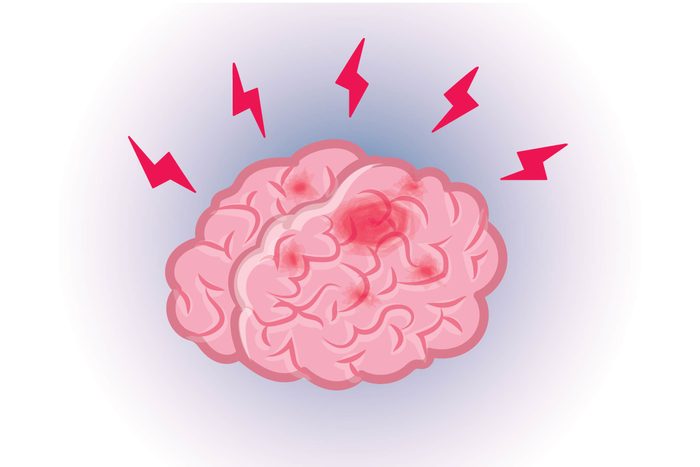
The brain itself can’t feel pain
Ever wonder how brain surgeons are able to perform surgeries on patients while they’re awake? Beth McQuiston, MD, a neurologist and the medical director of the diagnostics division at the health-care company Abbott, explains that even though the brain has layers of coverings and blood vessels that contain pain receptors, the brain itself has zero. When a person has a headache, for example, it’s often thought of as pain stemming from the brain, but this is actually not the case. The muscles and skin surrounding the brain, however, can feel pain. Don’t miss these 16 signs your headache pain could actually be something worse.
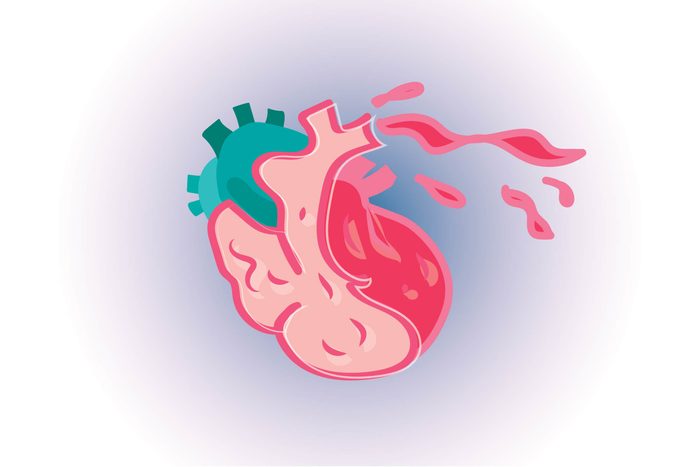
Your brain is greedy
Your brain might account for only about 3 percent of your body weight, but it receives about 30 percent of the blood being pumped by your heart. This shows how much attention and support it requires in comparison to the other seemingly important areas of your body. “The brain is like a spoiled and demanding child, but yet it is extremely smart and efficient,” explains Bennet Omalu, MD, a forensic pathologist, neuropathologist, epidemiologist, clinical professor at the University of California, Davis, and author of Truth Doesn’t Have a Side. “It takes the brain about 1/10,000th of a second to respond to something and generate an action.”
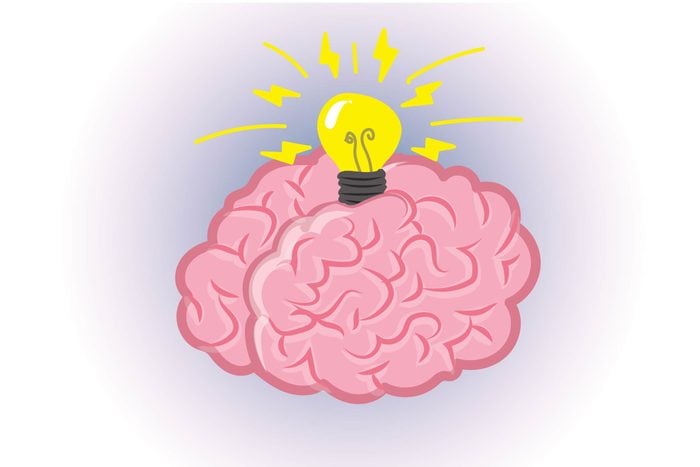
You actually do use most of your brain, most of the time
The film Limitless with Bradley Cooper is just the latest version of the myth that we only use 10 percent of our brain. “This misconception came about because the brain is so adaptable that sometimes minor damage causes only subtle problems,” explains Brett Wingeier, PhD, engineer, neuroscientist, and co-founder of Halo Neuroscience. “The fact is, most of your brain is constantly working—to sense, process, think, move, and even dream.” Even when you head to sleep at night, your brain is still hard at work. Here are some more things you never knew about your brain.
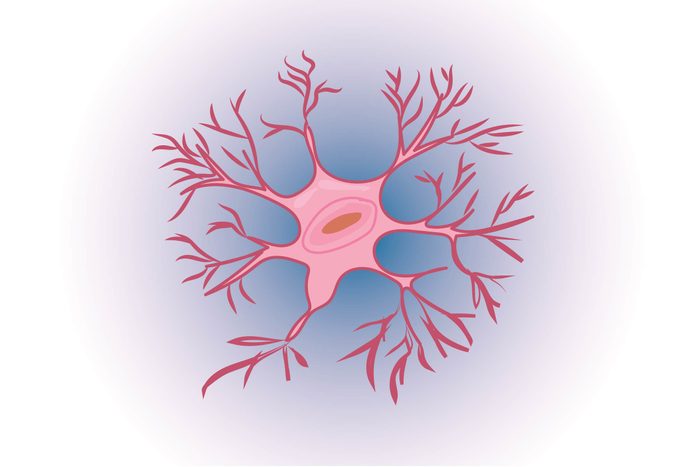
Adult brains still make new neurons
While most of our neurons have been with us since birth, and age does take a toll, your brain still makes new neurons. “This process, known as neurogenesis, occurs in a special region called the dentate gyrus,” explains Wingeier. “These neurons are thought to be important for learning, memory, and responding to stress.” These brain facts have been highly debated, but a 2019 study published in the journal Nature Medicine that looked at the brain tissue of 58 recently deceased people found that the adult brain can indeed generate new neurons. How can you boost neurogenesis in your own brain? Wingeier says through healthy living—things like sleep, exercise, and a balanced diet. Here are the foods you should be eating to boost your brain power.
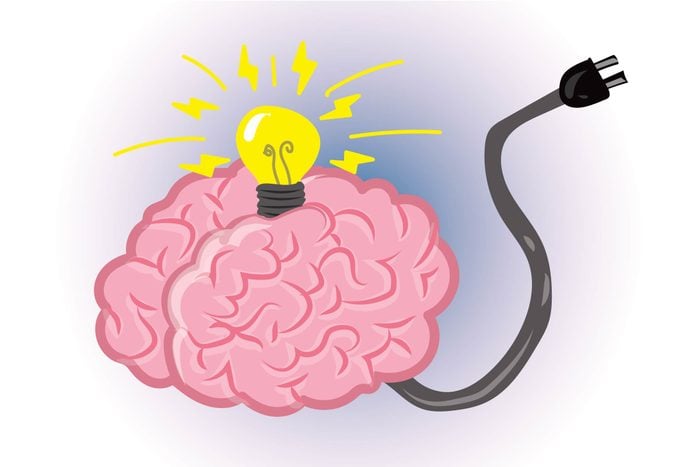
Almost half of a child’s energy goes to fuel his or her brain
In order for the brain to stay running at top-notch, it requires significant amounts of energy. And this is even more true for young children who are still learning, processing, and developing at a fast rate. “Scientists at Northwestern University discovered recently that in the preschool years, when a child’s brain development is faster, physical growth is slower, possibly to save more energy for the developing brain,” explains Wingeier. “Conversely, during puberty, when physical growth is faster, brain development is slower—which may come as no surprise to parents of teenagers.” Here’s how to tell if you’re raising a genius.
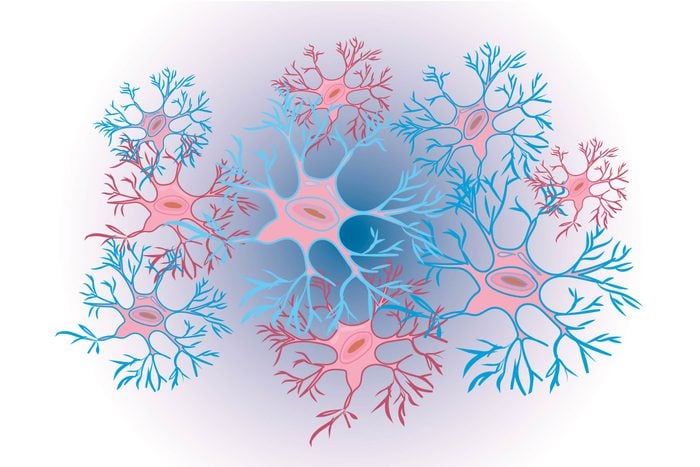
The majority of brain cells aren’t neurons
Did you know that for all the neurons in the brain, there are at least as many glial cells that support and protect these neurons? “These microscopic unsung heroes make sure neurons have a constant supply of nutrients and oxygen, insulate neurons from each other, and even help clean up after neural damage,” says Wingeier. “They even help optimize communication between neurons.”
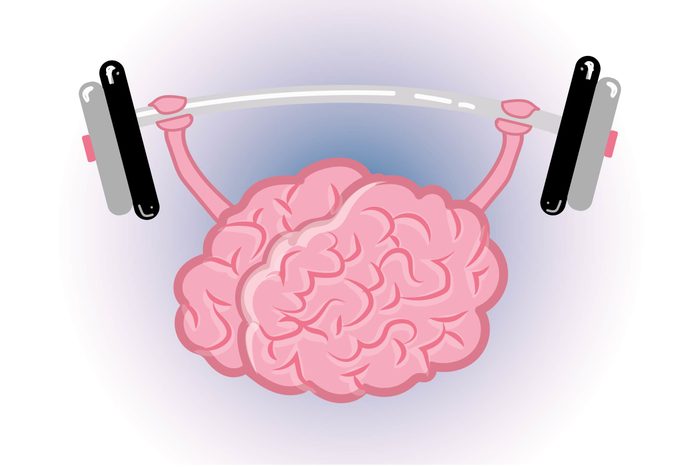
Exercise is just as good for your brain as it is for your body
Professional athletes know how important fueling their brain is to ensure they’re able to put maximum effort and energy into their workouts. “This is because of the mental stimulation that comes with exercise, but also because a healthy cardiovascular system means better plumbing for the brain,” says Wingeier. Especially when you try a new fitness class or regimen for the first time, your brain is working hard at learning the motions and controlling your muscles. Check out all the ways exercising benefits your brain.
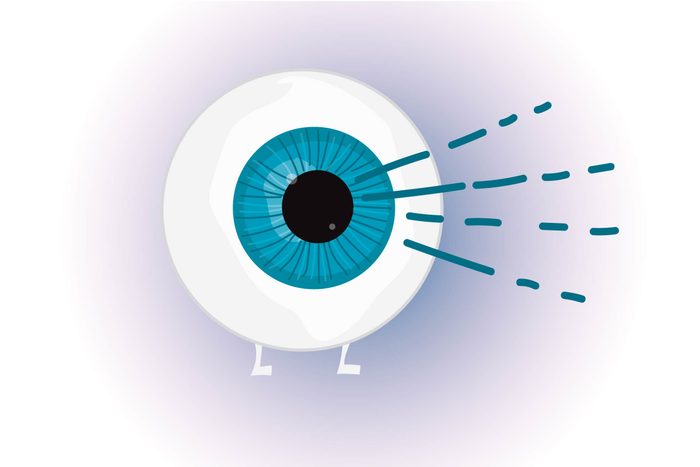
Your brain can rewire itself
Neuroplasticity, or the brain’s ability to reorganize and change itself throughout a person’s lifetime, is a truly remarkable thing. In one 2011 study published in the Proceedings of the National Academy of Sciences, University of Montreal researchers compared the brain activity of individuals who were born blind and those who had normal vision. They found that the part of the brain that’s normally wired to work with our eyes can instead rewire itself to process sound information instead of visual perception. Pretty cool, right?
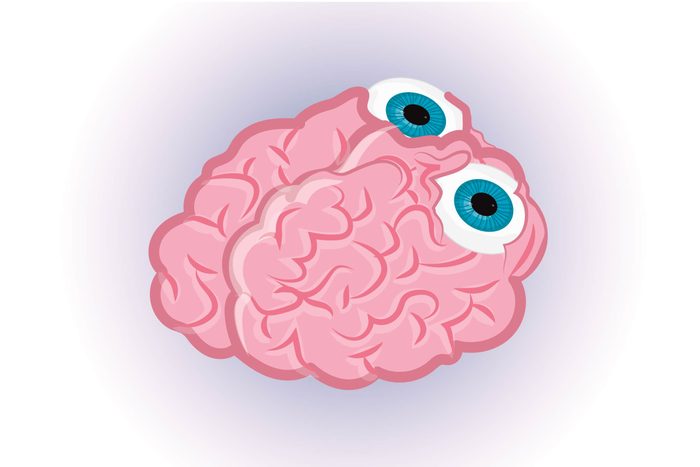
The visual areas of the brain are in the very back
These brain facts might sound counterintuitive, considering your eyes are in the front of your head, but the part of your brain responsible for vision, the occipital lobe, is located in the back. “Bang someone on the back of the head and they will see stars, not sounds,” says Henry Soper, PhD, a former clinical psychology faculty member in the School of Psychology at Fielding Graduate University. Similarly, the left side of your brain controls the vision on your right side and vice versa. “Although evolutionary theories have been proposed, the bottom line is we really do not know why,” Soper says.
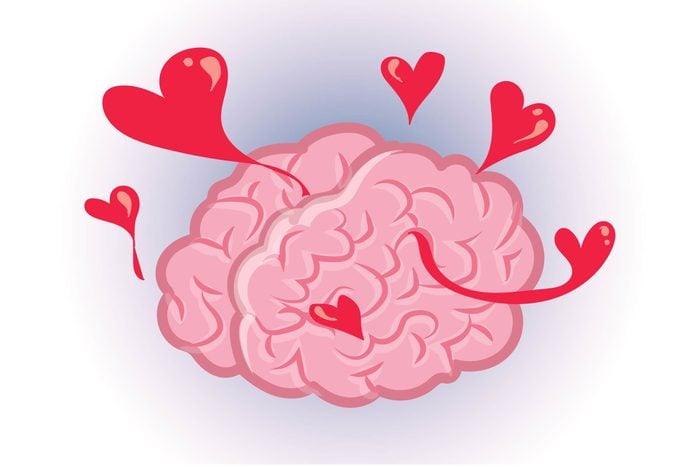
Brain scans can “light up” when a person is in love
Some may think that being “in love” is only an idea or merely a term people use, but brain scans reveal otherwise. “For people who are romantically in love, functional MRI brain scans can show activity where dopamine, the ‘feel-good’ neurotransmitter, is present,” says Dr. McQuiston. “Other areas in the brain associated with pleasure and reward can also show greater activity for people who have fallen in love.” Here are some more surprising brain facts and secrets we bet you didn’t know.
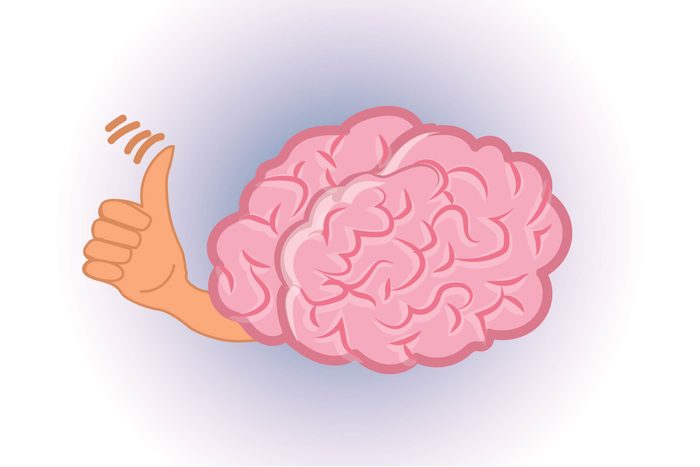
Your brain activity is as unique as your fingerprints
Research published in the journal Nature Neuroscience suggests that a person’s brain activity may be as unique as his or her own fingerprints. To reach their conclusion, scientists used functional magnetic resonance imaging (fMRI) to create “connectivity profiles,” which allowed researchers to identify the brain activity of more than 100 individuals. “Learning about individual brain connections offered scientists specific insights about an individual’s intelligence or personality,” explains Dr. McQuiston. “This could have implications for how scanning brains might be used in the future to one day help individualize care for each unique person.”
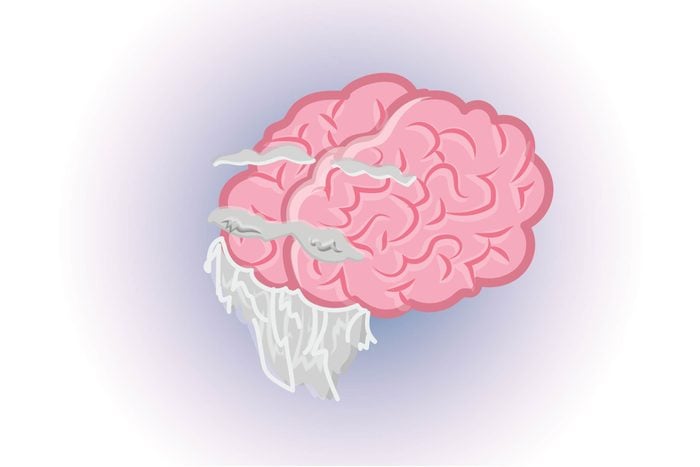
Your brain is smaller than your ancestors’
This might be one of the scariest of these brain facts when you really think about it, but paleoanthropological research suggests that our brains are shrinking. Skeletal evidence from every inhabited continent backs up this theory. Some scientists suggest that this may be related to the fact that the average body size of humans has also shrunk in size over the last 10,000 years. “A larger body requires a larger nervous system, so, as our bodies grew smaller, so did our brains in response,” suggests Donald Krieff, DO, a board-certified neurosurgeon.
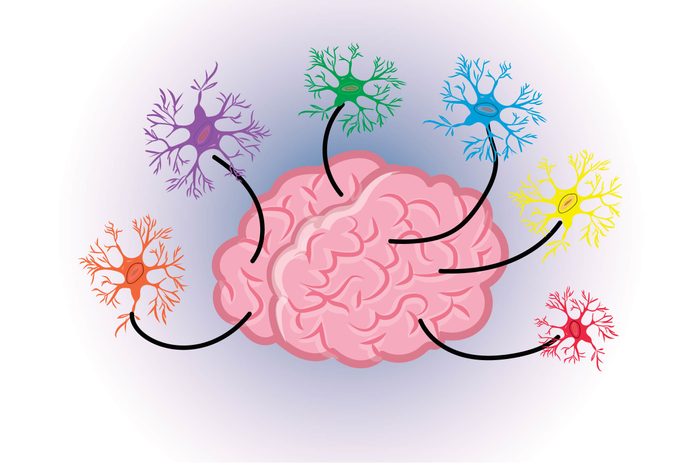
The brain has more cell types than any other tissue in our body
Unlike the liver or certain muscles in our body where most of the cells are the same type, the brain is composed of a variety of complicated, interconnected types of cells, one being neurons, explains Hermona Soreq, PhD, professor of molecular neuroscience at the Hebrew University of Jerusalem’s Edmond and Lily Safra Center for Brain Sciences. Try these morning brain boosters to stay sharp all day.
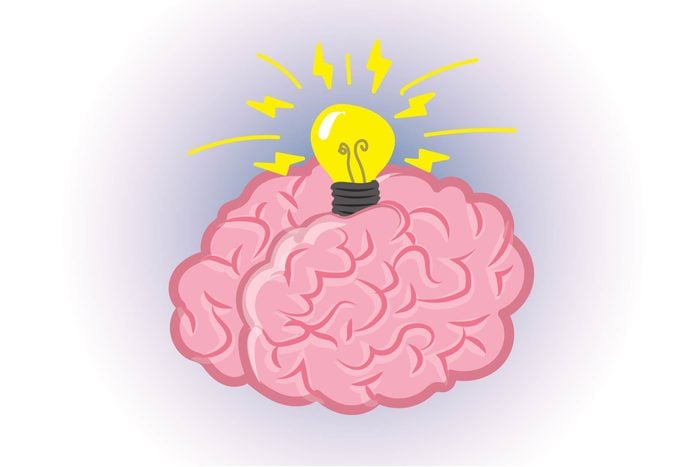
When you’re awake, your brain produces enough electricity to power a small light bulb
According to computer scientists at Stanford University, a robot with a processor that is virtually as intelligent as the human brain would need at least 10 megawatts of electricity to work properly. “Neurons in the brain do make enough electricity to run a light bulb—100 billions of cells generate this amount of energy,” explains Brandon Brock, a certified family nurse practitioner and staff clinician at Foundation Physicians Group. And the brain works fast, too—so fast that it’s speedier than the world’s greatest computer. “The information going to your brain from your arms and legs travels at 150 miles per hour.”
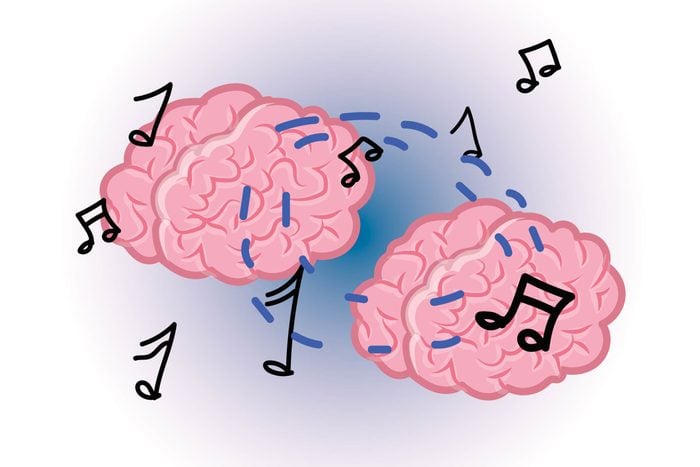
The brain waves of two musicians can synchronize when performing together
There’s a scientific reason why your favorite bands and musicians blend together harmoniously. A team of scientists at the Max Planck Institute for Human Development in Berlin, Germany, used electrodes to record the brain waves of 16 pairs of guitarists as they played the same musical sequence. Even though the two individuals in each pair played different parts, their brain waves synchronized. “This study suggests that there’s a neural blueprint for coordinating actions with others,” explains Brock. “Brainwaves, neurochemicals, and some say even heartbeats start to sync and become similar in those singing together or in choirs.”
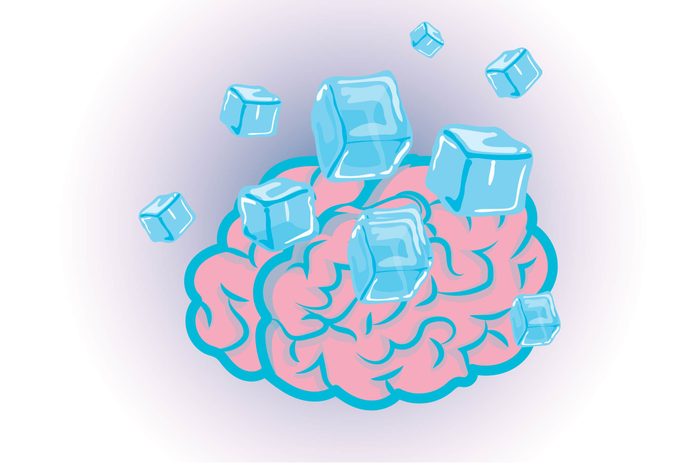
“Brain freeze” is actually your brain recognizing a drop in temperature
It’s true. In an effort to save you from freezing to death, your brain leaps into action when it senses a drop in temperature on your palate. “Your brain quickly increases blood pressure in an effort to tell you to slow down or take it easy,” says Brock. “The scientific term is sphenopalatine ganglioneuralgia and is a way for your brain to say that it is turning up the brakes on what you are doing to prevent unwanted changes due to temperature.” Learn more about the science behind brain freezes.
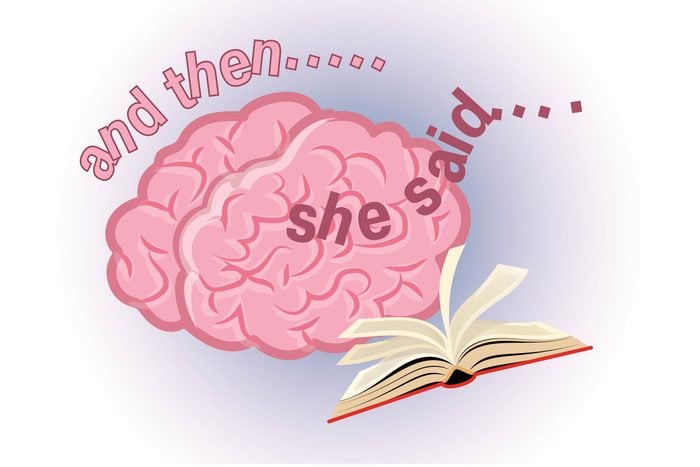
Reading aloud uses different brain circuits than reading silently
Researchers have long understood that children first learn to read by speaking words out loud and only once that knowledge has been established can they learn to read to themselves. “Environmental noise versus chaotic noise versus noise discrimination all use different channels,” explains Brock. In the same vein, noise in the form of music is processed differently than regular speech, various pitches and frequencies, and different harmonies, as well. This is why reading is so important for your brain.
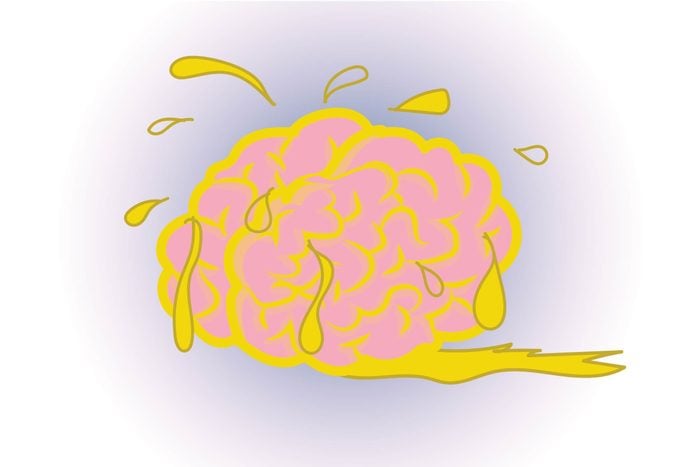
Your brain is mostly fat
Yep—your thinking cap is the fattiest organ in your body, consisting of a minimum of 60 percent fat. This is why a diet rich in healthy fats, such as omega-3s and omega-6s, is vital for brain and overall body health. “Fat stabilizes the cell walls in the brain and carries, absorbs, and stores fat-soluble vitamins in your bloodstream,” explains Brock. “It also reduces inflammation and helps the immune system regulate and function properly.”
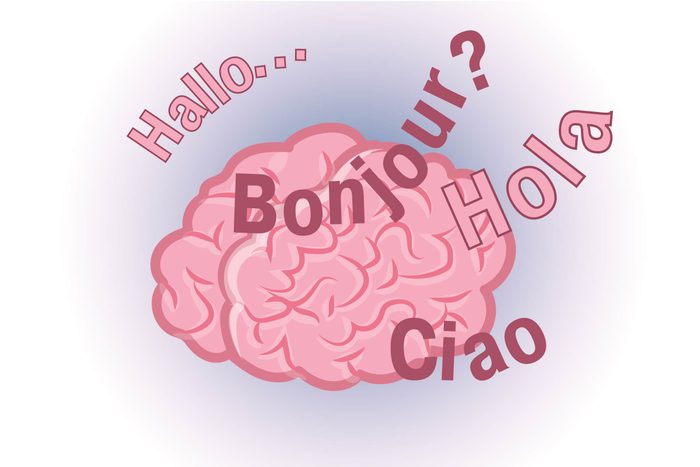
The brain is not permanently arranged at birth
Nope—those nerve cells in your noggin continue to change based on how often they’re used and stimulated in the first year of life. This is especially true for speech and language. “Some toddlers have to undergo extensive brain resections for medical reasons, and these procedures may, unfortunately, mean removing the primary language center in the brain,” explains Jennifer Bickel, MD, pediatric neurologist and director of the Comprehensive Headache Clinic at Children’s Mercy Kansas City. “If adults undergo a similar procedure, they are often unable to communicate through written or verbal language. However, [a young child’s] brain is so adaptable that it will reorganize itself and the ability to use language will be retained.” It’s this ongoing ability of the brain to adapt that is the reason why young children require regular exposure to language.
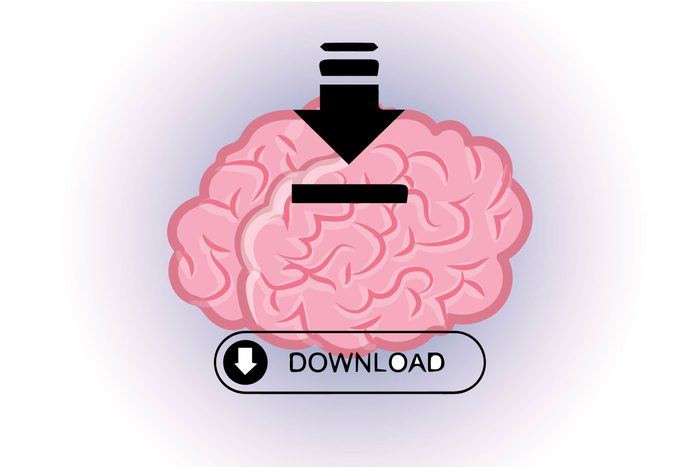
Reading allows your brain to directly download information
“Although the headsets of science fiction are still far off, technology—like the printing press—has been amplifying human abilities and helping us learn, process, and communicate for centuries now,” explains Wingeier. But why does this count as a brain-machine interface? When you learned to read, your brain had to change and restructure itself so your visual and language systems could transfer information from the page into your working memory. “Now, we’re augmenting our brains further with smartphones and Google searches,” he says. “And, just like the science-fiction headsets, it’s up to us to use them wisely.”
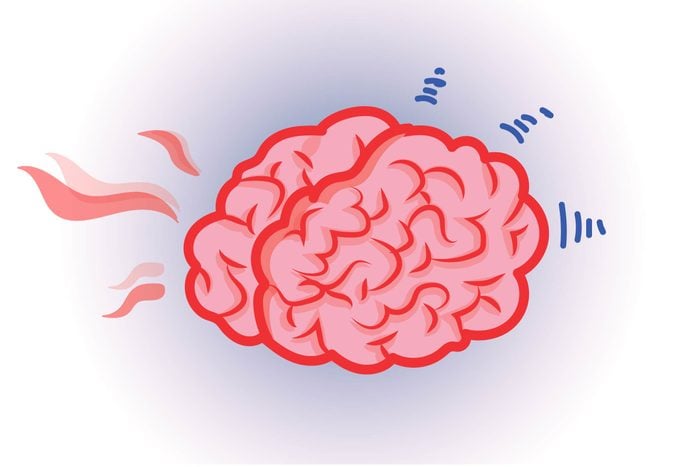
The harder your brain is working, the smaller your brain waves
As it’s working, your brain is creating electric fields. “The fields are measured on your scalp, called the electroencephalogram (EEG), and are often larger when your brain is doing less,” explains Wingeier. “This is because idle neurons sync up by default—so like a crowd chanting in unison, they can be ‘heard’ from far away.” Neurons processing more information sync up in more complex patterns, so like a crowd in which people are having a thousand different conversations, they’re harder to “hear” clearly.
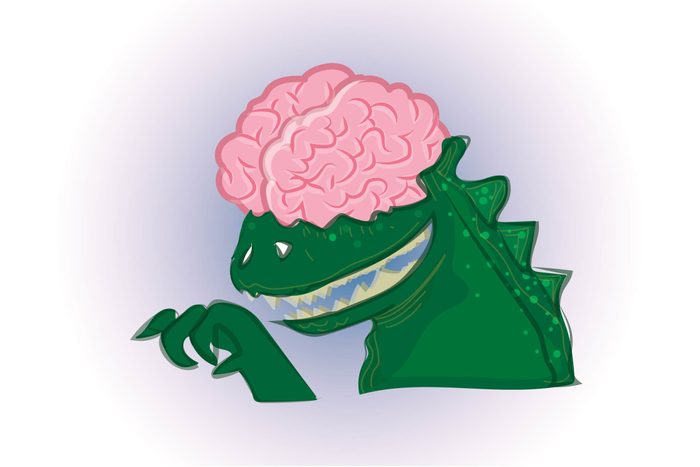
Dinosaurs lacked the ability to think and reason
There’s plenty that scientists are still discovering about the long-lost reptiles that roamed the earth 65 million years ago. But what they do know is that dinosaurs couldn’t think or reason the way humans can. “Dinosaurs had no neocortex, which we use for thinking and such, and no frontal lobes, which we use for planning and problem-solving and the like,” says Soper. “Dinosaur thinking is more along the lines of chicken thinking: They could learn certain things, but minimally compared to mammals.” They did, however, have a killer sense of smell that was far, far better than we humans have. Here’s how humans can sharpen their sense of taste and smell.
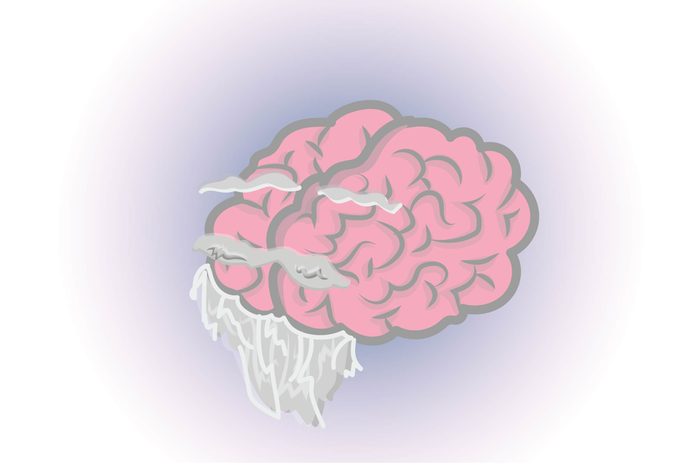
While we slow down as we age, much of our brain stays intact
“As many civilizations have said, the older folk know more because of their experience, even though their memory may not be as good,” says Soper. “With regard to aging, the mind that stays active and exercises will not show the decline that others may show.” Of course, this involves exercising the brain daily, which is why crossword puzzles and games like Sudoku, bingo, and mahjong can be incredibly helpful for the elderly. “If the elderly pick up mental exercises, their intelligence may actually go up,” explains Soper, “and the same is true of the body and its exercises.” Here are the signs that your brain is aging faster than you are.
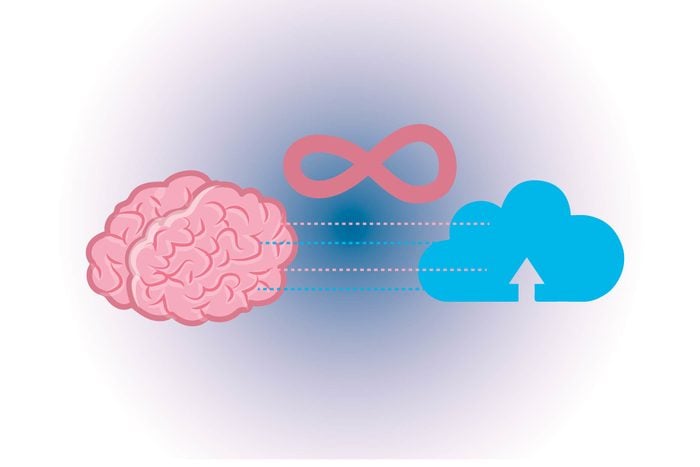
Your brain’s storage capacity is virtually unlimited
There’s no such thing as knowing too much—or learning so much that you can’t retain any more information (though it can certainly feel that way after sitting through a long board meeting). “Your brain doesn’t get ‘used up’ like the data storage in your computer or smartphone,” says Dr. Krieff. “There is endless brain power! Although lack of sleep can affect your brain’s ability to create more memories.”
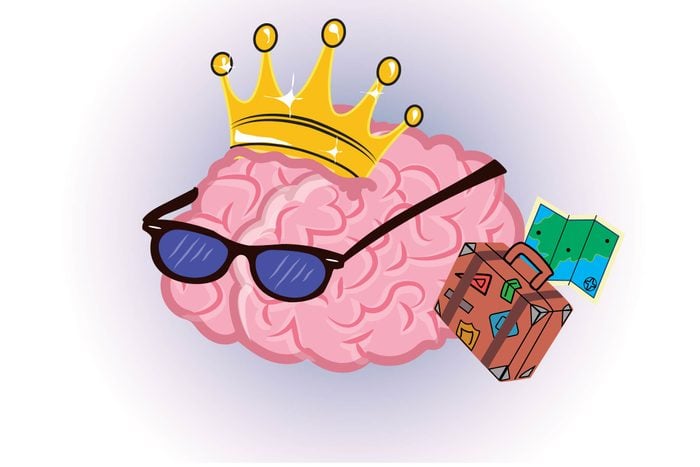
Use it or lose it
The brain is similar to a muscle, explains Shirley Newell, MD, former chief medical officer at Aegis Living. “You can build up your ‘cognitive reserve,’ or your brain’s innate ability to get a job done, through different types of learning and or through new experiences.” People with a stronger and healthier cognitive reserve—one that’s been strengthened with learned experience—have been shown to be more capable of coping with unexpected life events.
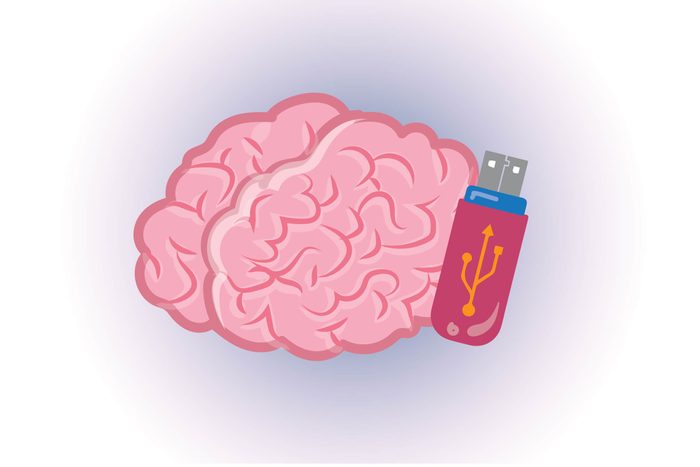
Short-term memory generally lasts around 20 to 30 seconds
Ever wonder how you can say something, get distracted briefly, and then completely forget what you were about to say? This has to do with your brain’s capacity for holding small amounts of information in the active mind. It keeps that information in an available state for easy access, but only does so for a period of around a half a minute. Brock notes that when recalling numbers, specifically, most people hold the memory for around 7.3 seconds on the average and 9.3 seconds on average for letters. Here are some more everyday things you didn’t realize were tricking your brain.
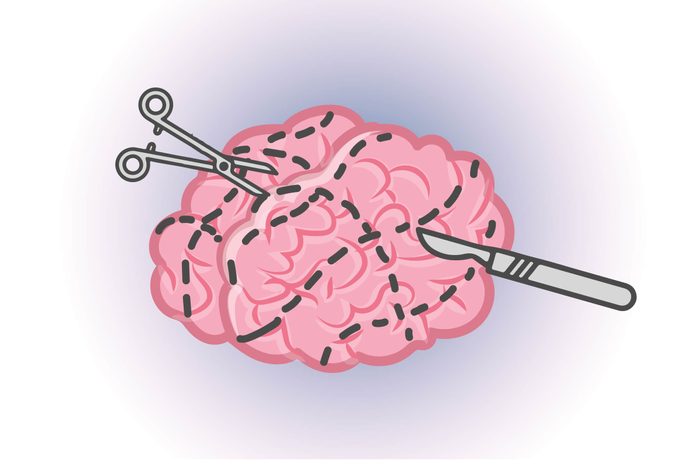
Surgical removal of almost half our brain is possible with little or no effect on personality or memory
These brain facts might sound crazy, but a hemispherectomy, or the surgical removal of half of the brain, can and does happen. It’s a very rare neurosurgical procedure that is used to treat a variety of seizure disorders. However, this type of procedure, as one would imagine, is not done without impact. “Some traits are very specific to one hemisphere, thus it can give us very subtle differences,” says Brock. “Usually memory, humor, and personality will recover, but cognition might change a little.”
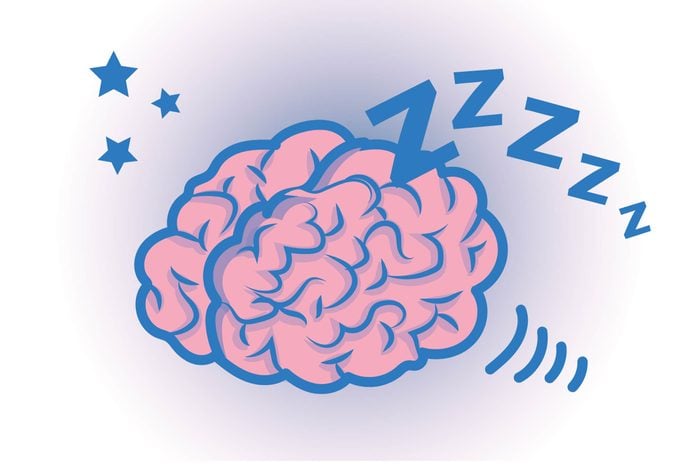
Sleep deprivation can affect the brain in many ways
There’s a reason that a solid seven to nine hours of sleep per night is recommended: Your body and your brain require rest in order to function properly, retain memory, and react in a timely manner. Judgment is even impaired when a human has not had a proper night’s rest. “Sleep deprivation kills brain cells, can create psychosis if long enough, and will reduce the ability of the body and the brain to heal,” says Brock. “All of these things can impact cognition, judgment, or reaction time.” If you found these brain facts mind-boggling, check out some more amazing trivia about the human body.

